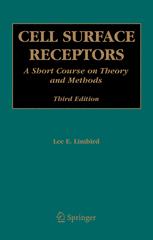

Most ebook files are in PDF format, so you can easily read them using various software such as Foxit Reader or directly on the Google Chrome browser.
Some ebook files are released by publishers in other formats such as .awz, .mobi, .epub, .fb2, etc. You may need to install specific software to read these formats on mobile/PC, such as Calibre.
Please read the tutorial at this link: https://ebookbell.com/faq
We offer FREE conversion to the popular formats you request; however, this may take some time. Therefore, right after payment, please email us, and we will try to provide the service as quickly as possible.
For some exceptional file formats or broken links (if any), please refrain from opening any disputes. Instead, email us first, and we will try to assist within a maximum of 6 hours.
EbookBell Team

4.8
74 reviewsCell Surface Receptors: A Short Course on Theory and Methods, 3rd Edition, links theoretical insights into drug-receptor interactions described in mathematical models with the experimental strategies to characterize the biological receptor of interest. The study of receptors has changed considerably over the period of the publication of the three editions of this book. The cloning of several genomes makes it unlikely that preparations of receptors now or in the future will arise from their purification as trace proteins from native tissues, but rather from a myriad of molecular approaches. Nonetheless, understanding the molecular mechanisms and ultimately the in vivo biology of these receptors means that investigators will engage in molecular, cellular and ultimate in vivo strategies. It should be of value to investigators who want to identify, characterize and understand the biology of a receptor of interest.
This book is primarily targeted to researchers and graduate students in the fields of molecular pharmacology, receptors, receptor biology, and signal transduction. These courses are variously found in pharmacology, molecular and cell biology, biochemistry and neuroscience. Researchers in the pharmaceutical industry working on bringing new drugs to market will also find this book useful.